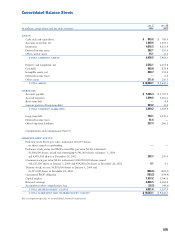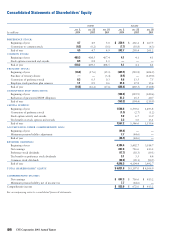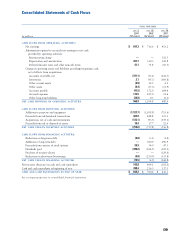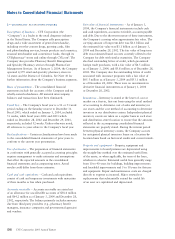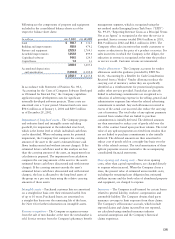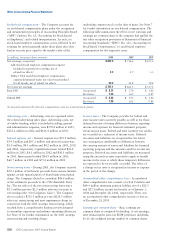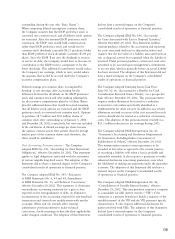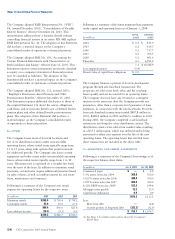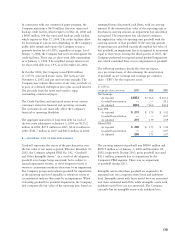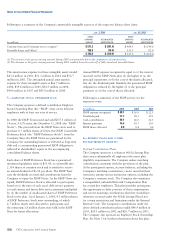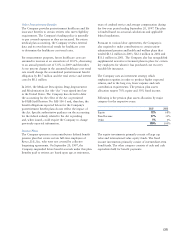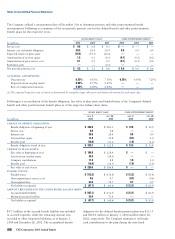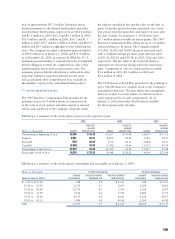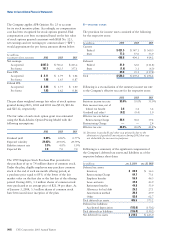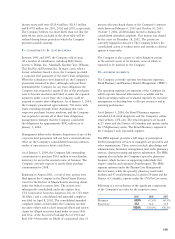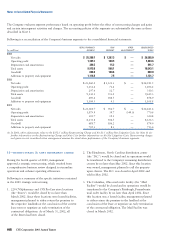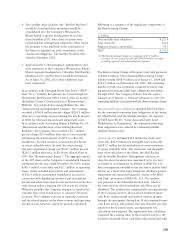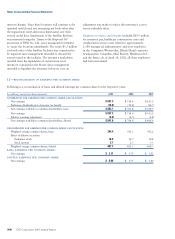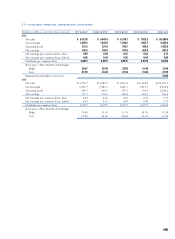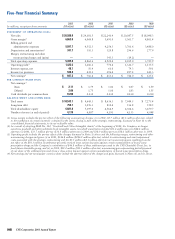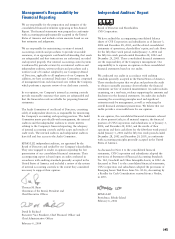CVS 2003 Annual Report Download - page 39
Download and view the complete annual report
Please find page 39 of the 2003 CVS annual report below. You can navigate through the pages in the report by either clicking on the pages listed below, or by using the keyword search tool below to find specific information within the annual report.
Other Postretirement Benefits
The Company provides postretirement healthcare and life
insurance benefits to certain retirees who meet eligibility
requirements. The Company’s funding policy is generally
to pay covered expenses as they are incurred. For retiree
medical plan accounting, the Company reviews external
data and its own historical trends for healthcare costs
to determine the healthcare cost trend rates.
For measurement purposes, future healthcare costs are
assumed to increase at an annual rate of 10.0%, decreasing
to an annual growth rate of 5.0% in 2009 and thereafter.
A one percent change in the assumed healthcare cost trend
rate would change the accumulated postretirement benefit
obligation by $0.7 million and the total service and interest
costs by $0.1 million.
In 2003, the Medicare Prescription Drug, Improvement
and Modernization Act (the “Act”) was signed into law
in the United States. The Company has elected to defer
the accounting for the effect of the Act as permitted
by FASB Staff Position No. FAS 106-1 and, therefore, the
benefit obligations reported below for the Company’s
postretirement benefit plans do not reflect the impact of
the Act. Specific authoritative guidance on the accounting
for the federal subsidy related to the Act is pending
and, when issued, could require the Company to change
previously reported information.
Pension Plans
The Company sponsors a noncontributory defined benefit
pension plan that covers certain full-time employees of
Revco, D.S., Inc. who were not covered by collective
bargaining agreements. On September 20, 1997, the
Company suspended future benefit accruals under this plan.
Benefits paid to retirees are based upon age at retirement,
years of credited service and average compensation during
the five-year period ending September 20, 1997. The plan
is funded based on actuarial calculations and applicable
federal regulations.
Pursuant to various labor agreements, the Company is
also required to make contributions to certain union-
administered pension and health and welfare plans that
totaled $13.2 million in 2003, $12.1 million in 2002 and
$11.1 million in 2001. The Company also has nonqualified
supplemental executive retirement plans in place for certain
key employees for whom it has purchased cost recovery
variable life insurance.
The Company uses an investment strategy which
emphasizes equities in order to produce higher expected
returns, and in the long run, lower expense and cash
contribution requirements. The pension plan assets
allocation targets 70% equity and 30% fixed income.
Following is the pension plan assets allocation by major
category for the respective years:
2003 2002
Equity 72% 68%
Fixed Income 27% 31%
Other 1% 1%
100% 100%
The equity investments primarily consist of large cap
value and international value equity funds. The fixed
income investments primarily consist of intermediate-term
bond funds. The other category consists of cash and cash
equivalents held for benefit payments.
(37)


